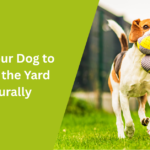Keep dogs safe while campaigning by arranging reliable care. Options include leaving them with family or friends, hiring a pet sitter, or using trusted dog boarding. If bringing them along, ensure breaks, shade, and water to reduce stress. Dogs need consistency, so plan feeding, walks, and rest around your campaign schedule.
Essential Preparations Before Campaign Season
Preparing your dog for a successful campaign season requires meticulous planning and attention to detail. A comprehensive approach ensures both you and your canine companion are ready for the challenges ahead.
Health check and documentation
Before diving into campaign preparations, scheduling a thorough veterinary examination stands as a top priority. Dogs need regular wellness checks every three to four weeks throughout their early training period. Additionally, maintaining proper documentation becomes crucial, particularly since government-endorsed records of vaccine history are necessary for travel.
I always ensure my dog’s microchip information stays current, since it serves as a fundamental identification method. Furthermore, obtaining proper health certificates becomes essential, especially if campaign events involve crossing state lines. These certificates must be completed by USDA-accredited veterinarians no more than 30 days before travel.
Training refresher basics
Mastering basic obedience commands forms the foundation of campaign readiness. Through my experience, I’ve found that dedicating at least 120 hours of training over six months yields optimal results. Moreover, focusing on essential commands like ‘sit,’ ‘stay,’ ‘come,’ ‘down,’ and ‘heel’ proves invaluable during public appearances.
Social behavior training deserves special attention. Your dog must demonstrate:
- No aggressive behavior toward people or other animals
- No soliciting food or attention from strangers
- Calm demeanor around various distractions
- Appropriate bathroom habits in public settings
Setting up support network
Building a reliable support system remains paramount for campaign success. First, identify a qualified veterinarian based on three key factors:
- Distance from campaign locations
- Available services
- Experience with your dog’s breed
Subsequently, establishing connections with certified trainers who use reward-based methods enhances your preparation strategy. These professionals can provide valuable guidance throughout the campaign journey.
Creating a Flexible Daily Schedule
Structure stands as the cornerstone of successful campaigning with dogs. Creating a well-planned daily schedule not only helps your canine companion feel secure but ultimately shapes their understanding of expected behaviors.
Morning exercise routine
Starting each day with a brisk morning walk sets a positive tone for the upcoming activities. I dedicate 45 minutes for our morning exercise, which provides essential physical activity and mental stimulation. This early session helps burn off excess energy, making it easier for dogs to stay focused throughout the day.
For optimal results, I incorporate interactive play sessions lasting 15-20 minutes. These sessions might include:
- Fetch or challenging toys for mental engagement
- Training exercises to reinforce basic commands
- Social interaction with other dogs when appropriate
Feeding and rest periods
Rest periods deserve careful consideration in your daily schedule. Young dogs might need up to 18 hours of sleep daily, necessitating planned quiet times throughout the day. I create designated rest zones where dogs can retreat undisturbed, which proves essential for maintaining their emotional well-being during demanding campaign schedules.
Mid-morning and mid-afternoon breaks serve as perfect opportunities for naps. These scheduled downtimes help prevent exhaustion and maintain optimal performance levels. Additionally, I use these periods to offer enrichment activities through food puzzles or stuffed toys, keeping their minds engaged while allowing physical rest.
For evening routines, I schedule a longer exercise session, followed by dinner and quiet time. This pattern helps establish a natural wind-down routine, preparing them for restful sleep. Consistency in these schedules becomes particularly important during campaign season, as it helps dogs cope with changing environments.
Managing Travel and Shows
Success on the campaign trail demands meticulous attention to travel logistics and show preparations. Through careful planning and organization, I ensure smooth transitions between events while maintaining my dog’s comfort and well-being.
Packing essentials
First aid supplies top my priority list for campaign travels. I maintain a comprehensive kit specifically designed for canine emergencies. Beyond medical necessities, I pack:
- Food measured for the entire journey plus extra for unexpected delays
- Collapsible bowls and water from home
- Current documentation including microchip details
- Grooming supplies and enzymatic cleaners
- Comfort items like familiar bedding and toys
For overnight stays, I bring sheets to protect hotel furnishings alongside proper bedding for my dog’s crate. Additionally, I pack multiple leashes, including a traffic lead for crowded venues plus backup options.
Transport arrangements
For air travel, specific considerations come into play. Small dogs meeting airline size requirements can travel in-cabin using soft-sided carriers that fit under seats. Larger dogs require airline-approved crates for cargo transport. Prior to flights, I:
- Confirm carrier measurements meet airline specifications
- Place identification tags on both dog and carrier
- Pack essential supplies within easy reach
- Review TSA and airline pet policies
Show day planning
Managing relationships proves crucial for campaign success. I’ve learned that support from the dog show community significantly impacts overall results. Hence, I focus on:
- Building positive connections with fellow exhibitors
- Maintaining professional interactions with judges
- Addressing any concerns privately away from ringside
- Supporting other competitors’ successes
Weather conditions influence show day preparations considerably. I pack appropriate gear like cooling equipment for hot days or protective wear for inclement weather. Furthermore, I carefully monitor my dog’s comfort level in crowded environments, remaining prepared to leave early if needed.
Building a Support Team
Building an effective support network emerges as a cornerstone of successful dog campaigning. Through careful selection and coordination of key team members, I ensure my dog receives optimal care throughout the campaign journey.
Finding reliable handlers
For handlers living with campaign dogs, establishing clear boundaries becomes essential. I always discuss these crucial points with potential handlers:
- Authority to make decisions about the dog’s show condition
- Responsibility for maintaining the show dog mindset
- Flexibility in adapting to the dog’s needs
Coordinating with veterinarians
In establishing a veterinary support system, I consider several key factors:
- Regular wellness checks scheduled every 3-4 weeks
- Availability during campaign events
- Experience with show dogs
- Emergency care protocols
Maintaining Dog’s Well-being
Keeping your dog’s emotional and physical well-being in check emerges as a critical aspect of successful campaigning. Recent studies indicate that approximately 30% of dogs exhibit some form of anxiety, making it essential to implement proper care strategies throughout the campaign season.
Stress management techniques
For immediate stress relief, I utilize several proven techniques:
- Setting up quiet spaces away from campaign activities
- Playing calming music or white noise to mask disruptive sounds
- Using pheromone diffusers or calming supplements two hours before events
Regular health monitoring
Maintaining optimal health requires vigilant observation and preventive care. Studies reveal that performance dogs need specialized attention due to their strenuous activities. I focus on:
- Monitoring hydration levels throughout training sessions
- Allowing intermittent water breaks instead of single large drinks
- Keeping body composition lean to prevent joint strain
- Scheduling regular veterinary check-ups every 3-4 weeks
Exercise balance
Physical activity remains crucial yet requires careful management. Young, healthy dogs need 2-3 brisk walks daily, lasting at least 20 minutes each. Nevertheless, exercise should extend beyond mere physical activity.
I incorporate balance training to maintain core strength, particularly beneficial as dogs age. Using inflatable balance disks or soft surfaces, we practice:
- Basic sit-and-stand exercises
- Controlled turning movements
- Front and back leg positioning
Conclusion
Successful dog campaigning demands dedication, careful planning, and unwavering attention to our companions’ needs. Through my experience, balancing structured routines with flexible adaptations helps both handlers and dogs thrive during campaign season.
Rather than viewing campaigning as merely a competitive endeavor, I treat it as a journey shared with my four-legged partner. This mindset shift makes all the difference – from establishing comprehensive health monitoring systems to building reliable support networks.
A well-prepared campaign strategy certainly increases our chances of success. Still, the true measure lies in maintaining our dog’s happiness and well-being throughout the process. After all, a content, healthy dog naturally performs better while creating lasting memories along the show circuit.
I’ve loved dogs all my life and have cared for many different breeds over the years. Here, I share simple tips, stories, and helpful advice for all dog lovers. Whether you’re a new pet parent or a lifelong dog fan, you’ll find something useful and fun on my site.


